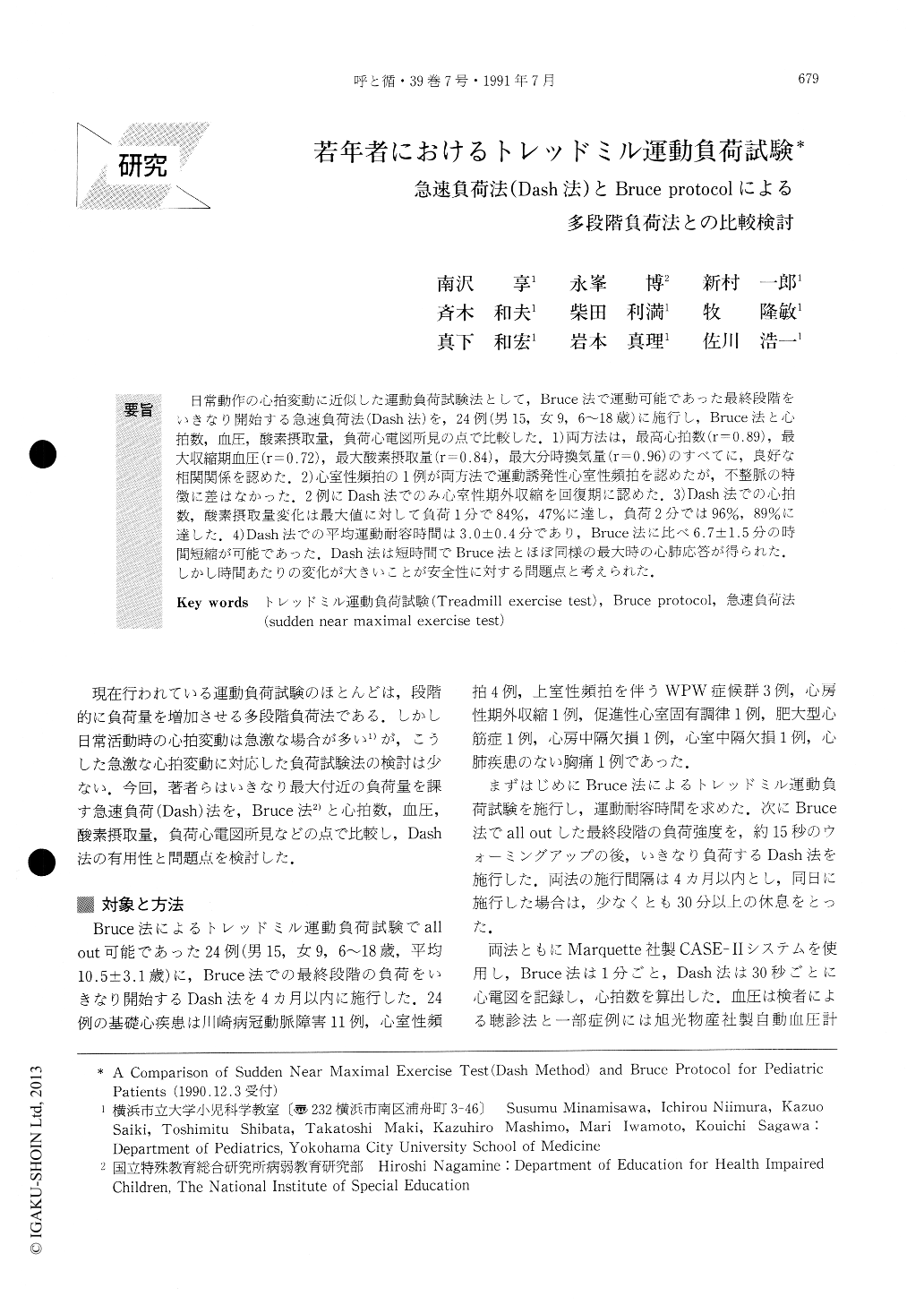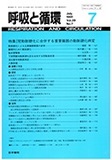Japanese
English
- 有料閲覧
- Abstract 文献概要
- 1ページ目 Look Inside
日常動作の心拍変動に近似した運動負荷試験法として,Bruce法で運動可能であった最終段階をいきなり開始する急速負荷法(Dash法)を,24例(男15,女9,6〜18歳)に施行し,Bruce法と心拍数,血圧,酸素摂取量,負荷心電図所見の点で比較した.1)両方法は,最高心拍数(r=0.89),最大収縮期血圧(r=0.72),最大酸素摂取量(r=0.84),最大分時換気量(r=0.96)のすべてに,良好な相関関係を認めた.2)心室性頻拍の1例が両方法で運動誘発性心室性頻拍を認めたが,不整脈の特徴に差はなかった.2例にDash法でのみ心室性期外収縮を回復期に認めた.3)Dash法での心拍数,酸素摂取量変化は最大値に対して負荷1分で84%,47%に達し,負荷2分では96%,89%に達した.4)Dash法での平均運動耐容時間は3.0±0.4分であり,Bruce法に比べ6.7±1.5分の時間短縮が可能であった.Dash法は短時間でBruce法とほぼ同様の最大時の心肺応答が得られた.しかし時間あたりの変化が大きいことが安全性に対する問題点と考えられた.
We examined 24 pediatric patients to evaluate the usefulness of sudden near maximal exercise test (dash method), where the subjects began to run at Bruce protocol of the last stage.
1) No considerable differences between twoprotocols were found in maximal oxygen consumption (VO2max), maximal heart rate (HRmax), maximal systolic blood pressure, and findings of electrocardiography.
2) The sudden maximal exercise test could be complet-ed during a shorter period compared to Bruce protocol.

Copyright © 1991, Igaku-Shoin Ltd. All rights reserved.


